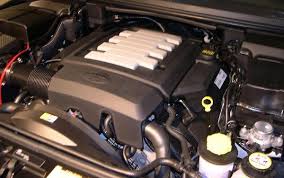
reconditioned engines
Introduction
In the world of automotive engineering, the concept of reconditioned engines has been gaining significant traction. As car owners and enthusiasts seek cost-effective yet reliable solutions for engine troubles, the option of engines stands out as a promising alternative. But what exactly are reconditioned engines, and how do they stack up against new and rebuilt engines? In this comprehensive guide, we’ll delve into the intricacies of reconditioned engines, exploring their benefits, the reconditioning process, potential drawbacks, and why they’re becoming an increasingly popular choice among motorists.
What Are Reconditioned Engines?
A reconditioned engine, also known as a remanufactured engine or a refurbished engine, is essentially a used engine that has undergone a rigorous process of restoration to bring it back to a like-new condition. Unlike rebuilt engines, which typically involve repairing or replacing only the faulty components, engines undergo a more thorough overhaul. This process includes disassembly, cleaning, inspection, replacement of worn or damaged parts, machining, reassembly, and rigorous testing to ensure optimal performance and reliability.
The Reconditioning Process
The reconditioning process begins with the acquisition of a used engine core, which serves as the foundation for the restoration. Each component inspected carefully. Checked for wear, damage, or issues. Parts beyond repair or unserviceable replaced. With new or remanufactured components.
Replacement parts are installed in the engine. Engine undergoes meticulous machining. Machining ensures precise tolerances. It includes cylinder boring, honing, crankshaft grinding, valve grinding, and more. After machining, engine is thoroughly cleaned. Removes contaminants and debris.
Reassembly is a critical phase of the reconditioning process, requiring skilled technicians to carefully assemble the engine with attention to detail and precision. Once reassembled, the engine undergoes extensive testing to verify its performance, durability, and reliability. This may involve bench testing, dyno testing, and road testing to simulate real-world driving conditions and ensure that the engine meets or exceeds OEM specifications.
Benefits of Reconditioned Engines
Reconditioned engines save money. They offer reliable performance. Compared to new or rebuilt engines, they’re cheaper.
Additionally, engines offer a faster turnaround time compared to rebuilding an engine from the ground up. Since much of the work involves refurbishing existing components rather than manufacturing new ones, reconditioned engines can be ready for installation in a relatively short amount of time.
Reconditioned engines often come with warranties for consumer peace of mind. These warranties typically cover parts and labor for a specified period, offering added protection and support.
From an environmental standpoint, engines also offer sustainability benefits by reducing the demand for new engine manufacturing and minimizing waste through the reuse of existing components.
Drawbacks and Considerations
While reconditioned engines offer numerous benefits, there are some potential drawbacks and considerations to keep in mind. First and foremost is the quality of the reconditioning process. Reconditioned engines vary in quality. Craftsmanship differs among remanufacturers.
It’s crucial to choose a reputable and experienced remanufacturer with a track record of delivering high-quality reconditioned engines. This may require research and due diligence to ensure that the remanufacturer adheres to strict quality control standards and utilizes top-notch materials and techniques.
Another consideration is the availability of core engines for reconditioning. As modern engines become increasingly complex and specialized, finding suitable core engines for reconditioning may become more challenging, potentially impacting the availability and cost of reconditioned engines.
Finally, while reconditioned engines can offer substantial cost savings compared to new engines, they may still represent a significant investment depending on the extent of the reconditioning required and the specific requirements of the application.
Sourcing and Sustainability
A significant aspect often overlooked is the sustainability aspect of reconditioned engines. In an era where environmental consciousness is paramount, reconditioned engine play a vital role in reducing the carbon footprint associated with automotive maintenance and repair. By refurbishing existing engines rather than manufacturing new ones, reconditioning conserves energy and raw materials while minimizing the environmental impact of engine replacement.
Furthermore, the process of sourcing core engines for reconditioning can contribute to sustainable practices within the automotive industry. Remanufacturers often partner with salvage yards or participate in engine exchange programs to acquire used engine cores. This not only helps reduce waste by repurposing engines that would otherwise end up in landfills but also promotes a circular economy where resources are reused and recycled to their fullest extent.
Conclusion
In conclusion, reconditioned engines represent a compelling option for motorists seeking reliable, cost-effective solutions for engine replacement or refurbishment. By undergoing a comprehensive process of restoration and testing, engines can deliver performance and reliability on par with new engines at a fraction of the cost. However, it’s essential to choose a reputable remanufacturer and carefully consider factors such as quality, availability, and cost when evaluating engines as a viable option. With proper research and attention to detail, engines can offer a practical and sustainable solution for extending the life of vehicles and keeping them on the road for years to come.




